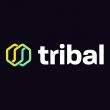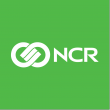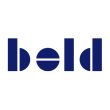Five open banking trends that are paving the way for a new financial experience
The digital revolution is underway in every aspect of daily life, and finances are no exception.

Gen Z and millennial consumers are key to driving the future adoption of open banking
Open banking empowers individuals to benefit from their financial data through a simple, secure connection they permission from their banks to their favorite financial app.
Fintech services powered by open banking data are gaining adoption across the banking and financial services industry. Consumers are looking to save time and money and improve their financial health.
Recent industry survey data show us just how comfortable and willing consumers are to utilise technology to manage their finances. These insights also provide some clear indicators into what the landscape for open banking and fintech looks like in the year ahead.
Consumer adoption of financial technology from paying bills to crypto
Data from consumers in the United States and Canada overwhelmingly show that they already embrace fintech and open banking.
Paying bills, one of the largest drivers of fintech adoption, is now considered mainstream with eight in ten Americans indicating they use a digital app, product, or service to accomplish this task. Other routine financial services such as filing taxes and sending or paying money to friends, family, and businesses have also moved to widespread digitisation.
More and more emerging types of fintech are gaining popularity rapidly. The cryptocurrency market has grown significantly in breadth and scope. While they’re still considered to be niche financial instruments, 18% of Americans are beginning to use these new types of currencies. Over half of those started using them just within the last year. And, close to a third of consumers in the US have used digital apps to secure or refinance a loan.
Younger generations will continue to drive this movement
Standing at the forefront of this digital movement are millennials. Nearly three in four millennials claim they are very confident using technology to manage money versus just over half of non-millennials. Millennials are accustomed to doing many of their daily tasks digitally and expect the same convenience, speed, and security for their finances. They are used to plugging their personal information into an app and being instantly connected to the world.
Gen Z and millennials are also more likely to link their bank accounts to pay for recurring services, retail purchases, and digital wallets. These digital natives are more willing to experiment with new tools in relation to older generations. Overall, younger consumers are more likely to believe that technology is just a better option, whereas baby boomers are half as likely than millennials to think an app is better than any other tool that exists.
While consumers across all generations express a broad comfort with technology, it’s clear that Gen Z and millennial consumers are key to driving the future adoption of open banking.
Personalisation will grow loyal customers
One of the key benefits of open banking is the creation of more personalised financial services. Consumers can permission their data which in turn creates more personalised financial experiences to meet their unique needs. Over three-quarters of US and Canadian respondents are linking their accounts today, especially younger and more diverse consumers.
Consumers are already connecting their financial data and making it work harder for them via multiple platforms. While convenience and ease are clear benefits, the power of open banking tools goes deeper.
Personalised financial tools that truly understand a consumer’s spending, payment, borrowing, and other transactions can expand access to services and financial products that otherwise may not have been available to them.
Holistic views tell a bigger story
Personal financial management apps that provide a comprehensive snapshot of a consumer’s finances will continue as a prominent use case in open banking. As consumers become more reliant on technology in different areas, they know and expect that they should be able to see the big picture of their digital financial footprint.
Consumers are considering new experiences that can offer a holistic view of their finances, to simplify processes like loans, paying off student debt, and starting an automated savings habit. 74% of consumers in the US say they utilise open banking to automate financial tasks and nearly two-thirds say they connect their bank accounts to get a full picture of their finances.
Zooming out and seeing the whole story gives a broader perspective, providing context that helps inform how consumers approach their spending, saving, and planning. Putting consumers at the center of how and where their financial data is used ensures greater transparency, and in turn, helps fintech companies, banks, and financial institutions gather feedback to create new solutions and services more efficiently.
Convenience is a mighty driving force
Convenience and ease of use will be the driving force in both the adoption of new financial services and the ways in which new consumers are introduced to open banking.
People are already embracing digital solutions over in-person financial experiences, with nearly two in three consumers in the US and Canada saying fintech saves them time. And that initial step of introducing consumers to open banking – by gaining consumer permission – has to be simple and trustworthy. Banks and fintechs utilising secure API platforms built on consumer-centric data principles will be necessary to continue driving the industry forward.
With over nine in ten consumers reporting the use of technology to manage money, understanding customer needs, desires, and pain points is crucial. This will guide financial innovators to the right platform on which to build and connect their open banking solutions. It will be their primary growth strategy and will drive strong customer engagement and loyalty.
As they do this, they need to remember to keep consumers at the center of the financial data experience. Give them control, make it easy to connect to their information, and show them the powerful benefits of open banking.











































